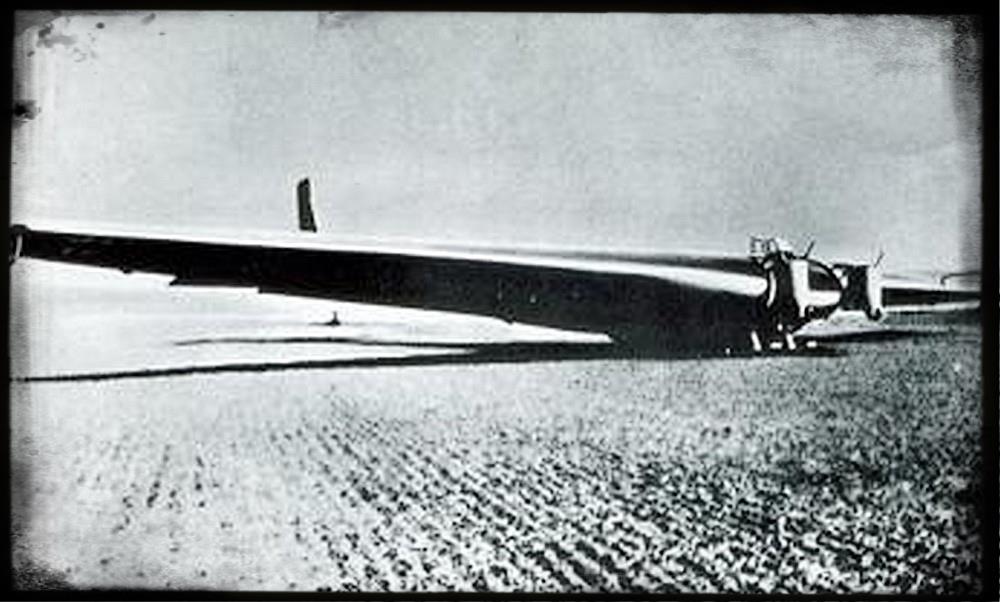Junkers Ju322
see also: Junkers Ju322 Production List
widebody transport glider aircraft, 140 soldiers, 2 built, F/F 12th March 1941 The German occupation of England was planned as the "Operation Seelowe" in 1940. The planning for this attack was dropped, when it became obvious, that Germany had no sufficent transport capacity by air, that could support the landing zones of the German army. Due to that fact, the RLM placed a request for a wide body transport glider to Messerschmitt and Junkers under the project name "Warschau" in summer 1940. Messerschmitt started the developement of the Me 321 (Warschau Sued), while Hertel designed the EF94 (Warschau Ost).
wooden materials, designed by Hertel and Paul Hall

Historical Data:
The wooden design of the EF94 should be capable for a payload of 20 tons of military cargo. The aircraft should be constructed for a life time of just a single mission. The forward wing nose was designed with a cargo door, which could also be used as a ramp. A ground wheel vehicle was designed, on which the EF94 was placed for take off and which was dropped after took off. Initially the EF94 design had a span of 82 metres, but this was reduced to 61 metres later on, as the larger wing span as to extensive for most hangars. The cargo area was 11 metres wide and 14 metres deep. In November 1940 both designs were presented to the RLM and an order was placed for 200 Messerschmitt Me321 and 100 Junkers Ju 322, as the EF94 was named now. The production of these Junkers aircraft was planned at Merseburg.
On 12th March 1941 Hesselbach performed the first flight of the Ju 322 prototype towed by a Junkers Ju90. The prototype had a reduced payload capacity as the wooden construction had to be increased. During the first test flight the Ju322 showed several severe instabilities. Major problems resulted from the underdimensioned tail unit of the aircraft and a gravity point, which was allocated to far in the rear parts of the aircraft. To overcome the gravity problem, two water tanks were added at the forward section of the aircraft. Also a larger tail unit was added following the first flight, the instability problem was still unsolved. During a second flight in April 1941, two of the three towing Me110 crashed and the Ju322 prototype performed a crash landing at Merseburg. In May 1941 the RLM therefore decided to stop the Ju322 developement in advance of the Me321 programme. At that time the serial production of the first 100 aircraft was already started. The first aircraft, which had already been finished, where scrapped without any flight.
Technical Data:
| Aircraft | year | engine | length in m | span in m | wing area im sqm | net weight in kg | payload in kg | seats | speed in km/h | range in km |
|---|---|---|---|---|---|---|---|---|---|---|
| EF94 | 1940 | none | 26,30 | 82,35 | n.a. | 23400 | 21600 | 140 | n.a. | n.a. |
Weblinks:
- Airwar.ru - Ju322 Story, Data, Photos
- Wikipedia.org - Ju322 Story, Data, Drawings
- Plane-Encyclopedia.com - Ju322 Story, Drawings
Literature:
- no dedicated literature known
introduced Jul 1996, transfered Aug 2017
http://hugojunkers.bplaced.net/
contents last updated 12 Jul 2003
.

